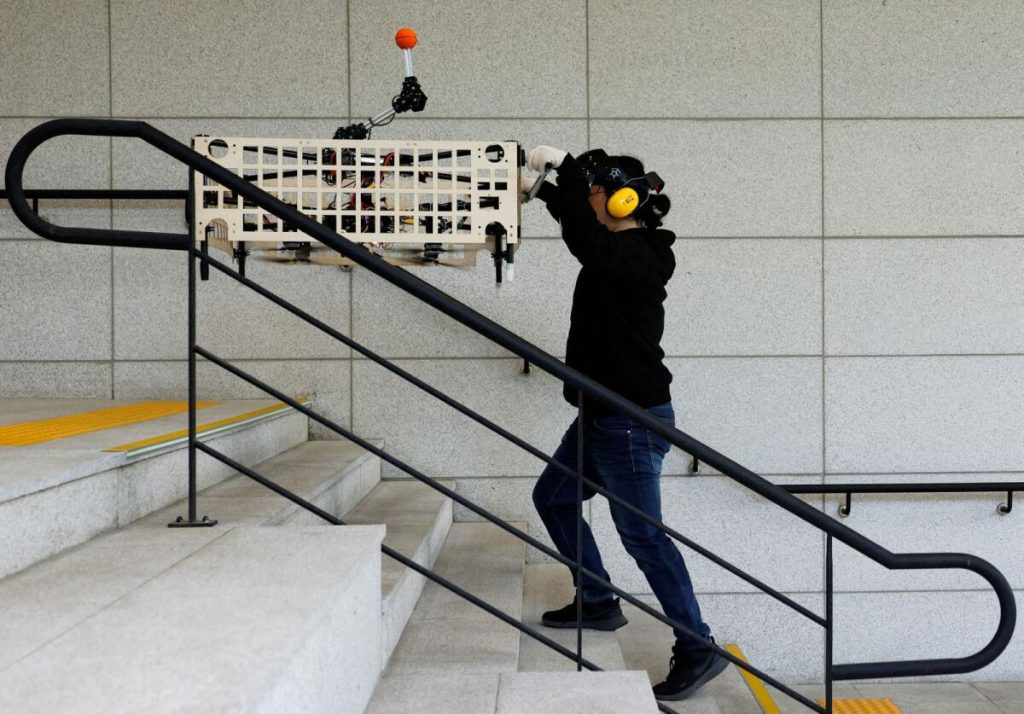A groundbreaking advancement in drone technology has emerged from a team of scientists at the Seoul National University of Science and Technology, who have successfully developed a flying shopping cart drone. This innovative drone is engineered to transport goods over challenging terrains, including stairs, thanks to its flexible rotors that adapt to maintain stability during flight.
Design and Functionality
The drone, aptly named the Palletrone, features a cargo platform situated on top, where items can be securely placed. It is operated by a user who guides it gently, much like steering a conventional shopping cart. This design is particularly useful for navigating uneven surfaces, allowing for the transportation of goods in environments where traditional wheeled carts would struggle.
During a recent demonstration, the tech team showcased the drone’s capabilities by having it carry boxes up and down stairs. The Palletrone remained balanced throughout its flight, thanks to an advanced algorithm designed to ensure stability. This algorithm allows the drone to adjust its rotors in real time, which is crucial for maintaining an even flight path.
Human-Robot Interaction
A key feature of the Palletrone is its ability to engage in “physical human-robot interaction.” This technology enables the drone to interpret and respond to a user’s movements and intentions, resulting in smoother and more intuitive operation. According to Professor Lee Seung-jae, a leading expert in mechanical system design engineering, this capability significantly enhances the drone’s usability, making it more responsive to human guidance.
Broader Applications Beyond Shopping
While the Palletrone’s primary purpose may be to act as a flying shopping cart, the research team has broader ambitions. Professor Lee emphasizes that their ultimate goal is to develop drones capable of maintaining steady, level flight in various applications. This stability could be particularly advantageous for transporting fragile or sensitive items, as the drone can change directions mid-flight without tilting.
The Palletrone has been tested with a load capacity of up to 3 kilograms (6.6 pounds). Although this weight limit is manageable for human handlers and somewhat restricts the drone’s potential for commercial cargo transport, the underlying technology holds promise for future applications. Lee envisions that the advancements made with the Palletrone could inform the development of uncrewed flying taxis, which could revolutionize personal transportation.
Future Prospects
Looking ahead, the team sees exciting possibilities for their drone technology. One idea is to enable drones to refuel mid-air by swapping batteries, eliminating the need for drones to return to base for recharging. This capability could extend the operational range of drones significantly, making them more viable for diverse applications, including delivery services and emergency response.
Multi-rotor drones like the Palletrone, despite their slower speeds and shorter ranges compared to fixed-wing drones, offer enhanced control and maneuverability. Their ability to hover in place gives them a distinct advantage in tasks that require precision, stability, and adaptability.
In summary, the Palletrone represents a significant step forward in drone technology, merging practical design with advanced engineering to create a versatile tool that could redefine how we think about transportation in everyday life. As research continues, the potential applications for such technology extend far beyond simple cargo transport, paving the way for innovations in various fields.

